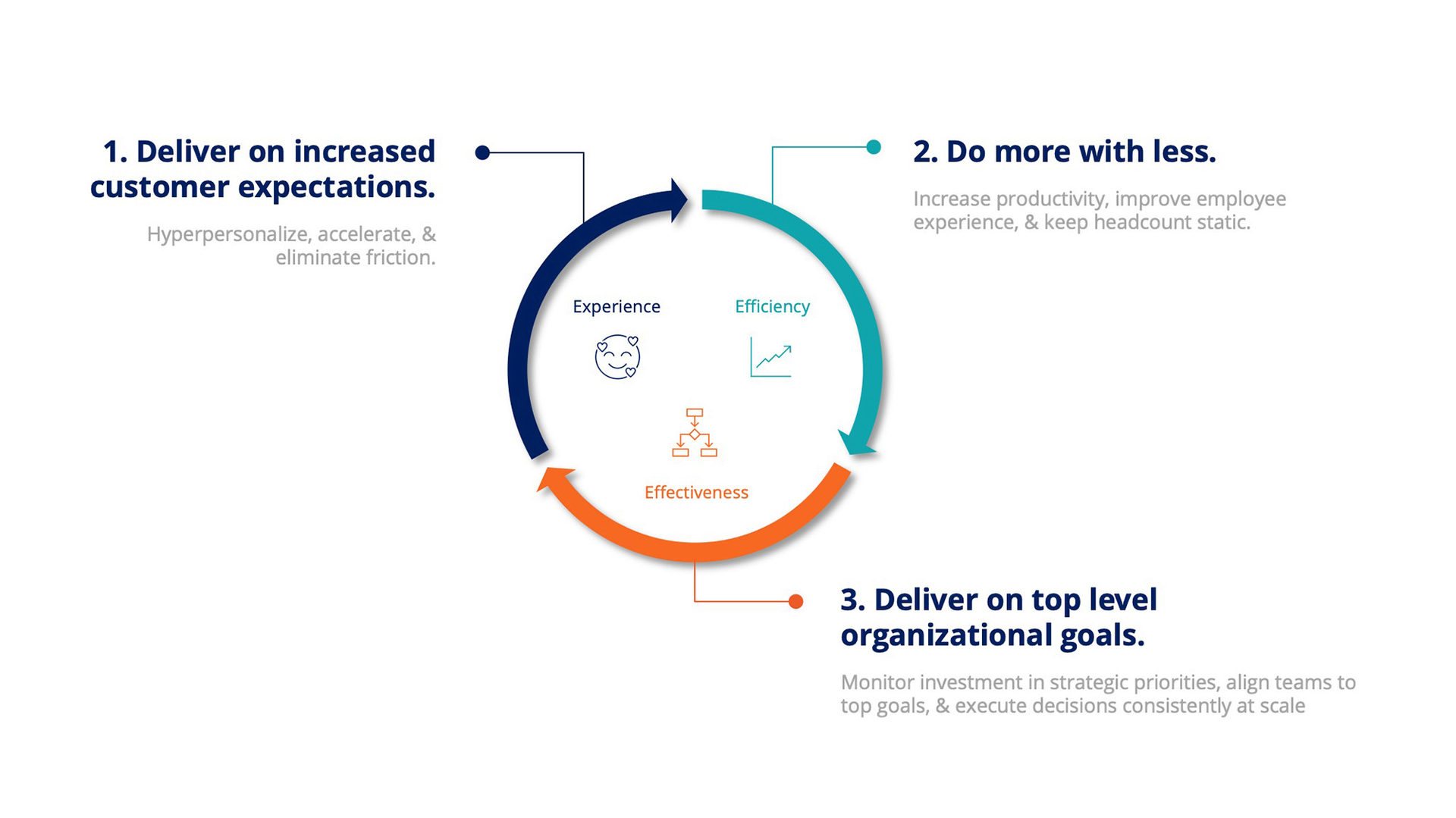Today, more than 90% of US online shoppers expect free two- to three-day shipping. Because of Amazon, all retailers need to invest just to keep pace with heightened customer expectations. 75% of apparel, hard goods, and specialty retailers have intentions to build out network capabilities that offer two-day or faster delivery.
And those who aren’t investing, or don’t meet customer expectations, put themselves at risk of losing out. Research shows almost half of omnichannel consumers will ditch a retailer when delivery times are too long.
The key to delivering on customer expectations while keeping profits high has been an investment in autonomous logistics. In 2016, Amazon introduced Amazon Robotics – which develops artificial intelligence (AI) and automation capabilities to remove bottlenecks and increase warehouse efficiency – like robotic arms, self-driving trucks, and machine vision capabilities for sorting and picking.
The move to autonomous logistics has simultaneously increased capacity, lowered operating costs, and accelerated the end-to-end shipping process.
Warehouses aren’t the only frontier of autonomous innovation. Vehicles, manufacturing processes, and even surgical practices are joining the ranks. AI and automation solutions are converging to create self-driving systems which increase speed and effectiveness while also increasing efficiency by freeing humans from tedious and mundane work.
So with autonomous on the rise, the question becomes: why are traditional industries stuck with manual work, static decision-making, and are unable to adapt to change?
Why change? Why now?
Today’s business leaders are balancing three competing imperatives:

#1 Deliver on increased customer experience.
Similar to how retailers are pushing higher customer expectations for shipping times, cloud-native disruptors are entering all traditional industries with new digital-first, frictionless, AI-driven experiences which seamlessly connect customers to services. It’s why 95% of marketing, data & analytics leaders say delivering relevant, real-time customer engagement is a priority.
One way to deliver faster customer service, with a more personalized experience is to hire more people to both engage with customers and quickly deliver on back-office workflows but…
#2 Do more with less.
The downturn in global economics combined with a highly competitive job market have left many organizations in situations where they need to find a way to increase the productivity of their existing workforce. They can’t hire enough people to do all their work – either because they need to tighten & control their operating costs or because they simply can’t recruit and hire fast enough. 91% of operations decision-makers say upskilling/reskilling employees is having an impact on operations functions.
And many organizations, simply hiring more people isn’t a silver bullet…
#3 Deliver on top-level organizational goals.
Today’s businesses must make, “…millions of decisions each day about a single customer, product, supplier, asset, or transaction.” In order to deliver on organizational goals – businesses need visibility and consistency across these decisions. They need to be able to weigh every decision against their business strategy. What gets in the way of this are static manual processes (like spreadsheets), disconnected workflows and data sources, and organizational siloes. Where most organizations actually end up, is with employees making decisions based on the limited information they have and best guesses – and when these decisions are summed up, they rarely add up to progress on business goals.
It’s why 82% of Fortune 500 CEOs feel their organization is effective at strategic planning. And only 14% indicated to be effective at implementing that strategy.
Enter: The autonomous enterprise
Becoming an autonomous enterprise is the only way to deliver on all three competing imperatives simultaneously.
An autonomous enterprise takes the same idea as autonomous driving or autonomous warehouses – it takes AI and automation capabilities and deploys them across the customer journey to become: AI-driven, automated end-to-end, and self-optimizing.
#1 AI-driven:
With a centralized, AI-powered decisioning platform, autonomous enterprises ensure every decision across customer engagement, customer service, and back-office operations is aligned to the top-level business strategy.
What this means:
In customer engagement, every transaction is assessed in real-time to determine the best course of action according to the needs of the customer and the organization’s strategy. This is what organizations like Wells Fargo are able to achieve across 70 million customers – deploying a real-time, omnichannel “next best conversation” platform to analyze billions of customer interactions and deliver the single best offer or action for each individual – resulting in a 3-10x increase in customer engagement rates.
In back-office operations, work can be routed automatically to the person who was likely to deliver the best customer experience the fastest based on the characteristics of the assignment. This is what organizations like Cisco are able to achieve with intelligent routing – resulting in better allocation of back-office agents and 88% automation of customer service processes.
#2 Automated end-to-end:
With a unified workflow automation backbone, autonomous enterprises ensures that manual work is eliminated as much as possible. Employees are engaged in workflows only for tasks and decisions which can’t be automated, like expert work or exceptions. This ensures customer needs are delivered fast, leaders have full visibility into what’s going on, and employees can focus their time ensuring margins remain high.
What this means:
In customer service, customers are able to quickly connect to an organization in their channel of preference to get results fast. This is what organizations like Unum are able to achieve by deploying Natural Language Processing (NLP) to assess and route incoming customer service emails – resulting in a 50% decrease in email response time.
In back-office operations, employees are freed up from time-consuming manual work. This is what organizations like QBE have been able to achieve in their Claims and Credit Control operations by leveraging Robotic Process Automation (RPA) – where they’ve been able to free over 50,000 hours of employee time by automating 30,000 tasks per week.
#3 Self-optimizing
With adaptive AI and AI-driven process mining, autonomous enterprises ensure that both discrete decisions and end-to-end workflows across customer engagement, customer service, and back-office operations are all automatically adapted, continually, based on changes in customer behavior and business strategy.
What this means:
In customer engagement, the offers and actions organizations drive are all backed by adaptive machine learning predictions – which continually get more predictive as more data & results get fed back. Isbank is leveraging over 700+ adaptive predictive models to drive unified customer engagement across 11 channels, resulting in a 37% increase in offer acceptance rate.
In customer service and back-office operations, end-to-end processes are continually analyzed by AI to uncover and address hidden inefficiencies – like rework, slowdowns, and bottlenecks.
Should we go from 0 to autonomous?
Becoming a self-driving business sounds like a pipe -dream to most organizations.
But deploying AI and automation across the customer journey, does not have to be an all-or-nothing endeavor – it’s a journey. AI and automation can be applied in phases, and iteratively – one customer outcome at a time.
Most organizations are just getting started [Source: Pega brand research]:

Based on where an organization or an individual business function or process is at along this spectrum, business leaders can identify where the biggest opportunity lies to apply AI & automation, moving closer toward an autonomous enterprise:
|
Where a process is today on the autonomous journey |
Possible stepping-stone to a more autonomous enterprise |
|
Reliant on manual work to make the vast majority of decisions and perform all functions with no centralized decisioning, data models, or significant customer insight. |
Gaining visibility into work and decisions by adopting case management for work intake and tracking. |
|
Leveraging basic digital tools to provide employees with tracking, data, and insight to support manual work. |
Increasing efficiency across routine work and decisions by applying automation to high volume, low complexity tasks and decisions. |
|
Routine logic, decisioning, and straight-forward processes are automated while humans make non-routine actions. |
Improving customer experience by adopting AI to learn and begin to guide humans and processes based on personalized customer context. |
|
Driving most processes automatically and guiding employees with AI-driven suggestions for expert work & exceptions which technology is not designed to handle. |
Automate even expert work by letting trained AI drive end-to-end processes when model confidence is high. |
Where to start: Autonomous enterprise
Open AI’s recent introduction of ChatGPT gave many the realization that soon just about any corporate function will be able to be automated with AI. (In fact this might be one of the last blog posts you ever read which was written by a human!).
But for many organization, the question is: where do we start? Where will we get the most value from moving toward autonomous? The answers will be in the functions which have the biggest impact on the overall customer journey with your organization – customer engagement, customer service, and back-office operations.
Learn more about how Gartner views the future of autonomous enterprise, and how organizations like Wells Fargo are revolutionizing the customer experience with Pega's low-code platform for AI-powered decisoining workflow automation!

